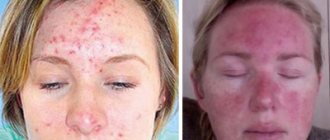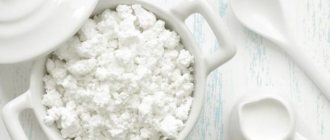Bedsores on the heels of black color occur in bedridden patients not only at home, but also in the hospital and represent dead areas of the heel skin. The development of bedsores occurs with prolonged compression of soft tissues and skin between the heel bone and the surface of the bed. Most often, black bedsores on the heels occur in patients with prolonged immobility, especially against the background of circulatory problems. Trophic heel ulcers are treatable, but some never heal completely. Bedsores are easier to prevent than to cure. The degree of skin and tissue damage ranges from redness of the skin to a deep necrotic wound involving the bone. Many patients and their relatives try to treat pressure sores on their heels at home. This approach can be successful in the early stages of the disease, but when the process develops deep into the heel bone, it becomes impossible to cure such a bedsore without complex reconstructive plastic surgery.
Diagnosis of acute ischemia during examination by a vascular surgeon
The classic picture of acute ischemia is determined by six symptoms:
- Sudden leg pain
- Pale skin
- Absence or deficit of movement in the affected limb
- Absence of pulse in the affected limb
- Decreased skin sensitivity
- Decreased skin temperature
The pain may be constant or with passive movement of the affected limb. With an embolic blockage, the pain is usually sudden and very intense. With thrombosis, the pain intensity is much less, and sometimes there is a progressive increase in intermittent claudication.
Dry and rough heels: what else can be done at home
What else can you do to soften dry heels? In addition to basic care rituals, you can also use auxiliary beauty procedures that will help make the skin of your heels smooth and soft.
- Foot baths
: a time-tested remedy for softening and soothing dry and rough skin on the feet. Important: It is not recommended to keep your feet in water for more than 10 minutes - remember that water can dry out the skin. Before you take a herbal bath for the first time, make sure that you do not have allergic reactions to them. - Masks and compresses
: nourishing masks and compresses based on cosmetic oils are usually made after steaming and exfoliating dry skin. They help saturate the skin with useful substances, additionally nourish and soften it. - Skin polishing
: if you are used to using a pumice stone or a file to thoroughly exfoliate the stratum corneum on your heels, try to choose “soft” formats of these products. Use them no more than once a week and do not use them if you have open wounds or cracks on your skin.
Ultrasound duplex scanning
Ultrasound duplex scanning allows you to determine the patency of the arteries, localize the site of blockage of the vessel and the state of blood flow below the site of occlusion. Often, in acute ischemia, this diagnosis is enough to determine treatment tactics and send the patient to the operating table. With an embolism or rupture, the arteries below the blockage are usually empty or thrombosed, and blood flow in them is not detectable. Blood flow in the veins is sharply slowed down. With thrombosis, blood flow can be detected below the site of blockage, but its speed is sharply reduced; most often, blood flow through the main vessels cannot be detected, but blood flow can be seen through collaterals. As a rule, this is due to
Basic rules for caring for dry and rough heels
Sometimes it seems that even very dry heels do not require any special care - just regular peelings and pedicures are enough. Of course, this is not entirely true. Like any area of our body, heels need care rituals.
Cleansing
Of course, you don’t need to look for any special product for washing your heels - just choose a body cleansing gel that also has intense moisturizing properties. A good example would be CeraVe Moisturizing Cleansing Cream-Gel, which is suitable for normal to dry body skin.
Moisturizing cleansing cream-gel
For normal to dry skin of the face and body
Effectively cleanses and moisturizes the skin, helping to restore its protective barrier.
More details
CeraVe cream-gel effectively cleanses the skin and contains hyaluronic acid and glycerin, which promote intense hydration. The ceramides included in the composition are also responsible for restoring and strengthening the skin's protective barrier, helping to resist negative environmental factors.
Hydration and restoration
The second basic stage of care should be the use of a moisturizing and renewing product - such as CeraVe Restoring Foot Cream. It is designed for dry and rough skin on the feet and contains ceramides, salicylic acid and niacinamide.
Revitalizing foot cream
For dry skin
Effectively exfoliates and moisturizes chapped foot skin without irritating it.
88 ml
More details
Thanks to this composition, CeraVe Regenerating Foot Cream softens and moisturizes dry skin on the heels, restoring it. Ceramides help maintain and strengthen the skin's protective properties, while salicylic acid gently exfoliates dead skin cells and promotes rapid skin renewal.
Exfoliation
As we have already said, peeling the skin in the heel area should be quite gentle and delicate. Do not get too carried away with the use of pumice stones, active scrubs or mechanical methods of skin removal, including trimming pedicures.
Instead, it is better to use softening baths, scrubs with small abrasive particles 1-2 times a week, or, as necessary, do an unedged (hardware) pedicure in a specialist’s office. These are more gentle/gentle ways to soften and exfoliate rough, dry or rough heel skin.
Angiography
To resolve the issue, surgical tactics require information about the patency of the arteries of the affected limb. The choice of technique for restoring blood circulation depends on the condition of the inflow pathways to the affected limb and the vascular bed below the site of blockage. In addition, angiography can distinguish embolism from thrombosis against the background of atherosclerotic narrowing. During an angiographic examination, endovascular treatment can be undertaken in the form of thrombectomy and angioplasty of the affected segments or local thrombolytic therapy can be performed.
Arterial embolism is an acute blockage of a vessel by a thrombus or other object brought from other parts of the vascular bed. Most often, vascular surgeons deal with thromboembolism from the heart cavity during a heart attack or atrial fibrillation, from the cavity of the aneurysm of the vessel overlying the blocked artery.
Consequences of acute cessation of blood flow
The sudden cessation of blood flow leads to the phenomenon of acute ischemia. The organs and tissues that are supplied by this artery lack nutrition and oxygen, so they begin to slowly die. The most specialized tissues are affected first—nervous, muscle, and finally skin. The body tries to restore blood circulation by opening additional bypass pathways for blood flow, so sometimes tissue death is stopped. But the likelihood of such an outcome is low. In any case, acute ischemia leads either to gangrene or to the development of chronic circulatory deficiency - critical ischemia.
Prevention and prognosis
Movement constantly redistributes pressure on our body. When illness or injury limits our mobility, pressure builds up in certain areas of the body and blood circulation decreases. This can lead to the death of skin and tissue, creating pressure sores and ulcers. To reduce the risk, it is necessary to use anti-bedsore systems and devices that relieve pressure on bone protrusions.
Healing of the wound on the heel is delayed due to the immobile position of the patient, poor trophism due to vascular lesions and the general condition of the body. Improper wound care and various folk recipes negatively affect the patient’s condition. A bedsore is complicated by damage to the surrounding soft tissue, infection and purulent discharge. A long-term purulent-destructive process leads to a deterioration in the general condition and impaired absorption of nutrients. Without proper care, a patient develops new bedsores in other parts of the body, which aggravate the pathological process.
However, simple treatments can help prevent these painful and dangerous problems.
- Take care of your skin:
Examine the patient's skin several times a day. Pay special attention to the heel areas and other pressure points on the body. Minimize contact of moisture with the body. Keep skin clean and dry. Wash it with a mild cleanser, care oil and wipe dry. Perform hygiene procedures and wash with soap as quickly as possible to limit skin exposure to moisture, urine and feces. Change bedding and clothing promptly. Make sure that there are no wrinkles in the bed linen and clothes under the patient.
- Protect your skin from injury:
Avoid massaging the affected areas of soft tissue over bony prominences. Change your body position at least every 2 hours. Reduce friction. If the patient is bedridden, the head of the bed should be raised as little as possible. When it rises above 30 degrees, a person can slide across the surface of the bed, damaging tissue and small blood vessels.
Pillows and special pads should be used to avoid contact between the knees and ankles when turning the patient on his side. If the patient is completely immobile, pillows should be placed under the feet from mid-calf to ankle to relieve pressure on the heels. Never place pillows under your knees. This impairs blood circulation.
- Eat well:
A balanced diet is very important for healthy skin at all stages of treatment. Healthy tissue is less susceptible to damage. In cases of scuffs and abrasions, treat the defects with antiseptic preparations.
- Improve patients' ability to move:
A rehabilitation program can help some people get back into shape quickly.
- Shift your weight and change positions frequently:
If you use a wheelchair, try shifting your weight every 15 minutes or so. Get up if possible. If you have enough strength in your arms, do a push-up—lifting your body off the seat, resting on the armrests of the chair. Bedridden patients may experience discomfort, pain, social isolation or depression. Try to find something to do that suits your physical capabilities.
Attempts to treat bedsores at home with folk remedies often lead to the opposite effect. Do not try to cope with the problem without specialists - you can lead the situation to a hopeless dead end.
Stages of acute ischemia
1. Sudden pain in the leg, coldness, reduction in walking distance. If the collateral vessels are good, ischemia may stop at this stage with the development of intermittent claudication or critical ischemia. Most often, this stage is observed with thrombosis of altered arteries, if their lumen was previously narrowed and collateral circulation developed. At this stage, the operation is carried out after the necessary additional examination and preparation. The color of the leg may be pale or take on a bluish tint (cyanosis). The result of surgical treatment is excellent. Recovery of leg function is most often complete.
2. The symptoms described above are accompanied by weakness in the leg, which gradually worsens to the point of paralysis. However, passive movements in the fingers and other joints are possible. Such phenomena are associated with the death of nerve endings and blockade of nerve impulse transmission along the nerves. This stage of ischemia is an absolute indication for emergency surgery, since independent restoration of blood flow is impossible, and delay in intervention will lead to gangrene. Timely surgery restores blood flow with minimal loss of limb function. Numbness of the foot and fingers remains, and swelling of the leg persists for a long time.
3. Muscle death begins, first there are foci of muscle necrosis, muscle pain, and dense swelling of the lower leg. Then comes numbness of the fingers, ankle joint, and knee joint (muscle contracture). The muscles die completely. If the muscles are partially lost after restoration of blood flow and a long postoperative period, the leg may be preserved, but walking will be difficult. In the case of muscle contracture, amputation is necessary, since restoration of blood flow leads to the death of a person from poisoning with decay products.
Complications
Complications of bedsores (especially pressure ulcers) can be life-threatening and include:
- Phlegmon
Acute purulent inflammation of the skin and soft tissues. People with nerve damage (neuropathy) or a spinal injury often feel no pain in the area affected by inflammation and pressure sores. Cellulitis can cause severe intoxication and even general blood poisoning (sepsis).
- Heel ulcer
A chronic heel wound that does not heal for a long time significantly worsens the patient’s quality of life, as it leads to impaired support and walking function. A trophic heel ulcer can occur as a result of a bedsore, not only in spinal patients, but also in postoperative and post-resuscitation patients due to their prolonged immobilization.
- Damage to bones and joints
Infection from an ulcer can affect joints and bones. Infection in the joint cavity can cause general blood poisoning. Bone infections (osteomyelitis) can lead to destruction of the heel bone.
- Cancer
Wounds that do not heal over time can eventually develop into squamous cell skin cancer.
- Sepsis
General blood poisoning develops with weakened immunity, diabetes mellitus and other severe concomitant diseases and often causes death.
Diagnosis of thrombosis or embolism
In addition to the clinical picture, it is necessary to use special research methods for diagnosis.
Ultrasound diagnostics makes it possible to clarify the nature of occlusion and identify atherosclerotic plaques during thrombosis. Thrombosis differs from embolism in the initial damage to the arteries; in embolism, the arteries are most often not affected.
Angiography is performed on the operating table to clarify the receiving vascular bed and allows you to determine the nature of the surgical intervention
Multislice computed tomography is performed when there is time for a detailed diagnosis and allows you to very accurately identify the nature of the lesions and determine treatment tactics.
Treatment at the Innovative Vascular Center
Doctors at the Innovative Vascular Center, treating severe vascular patients with many concomitant diseases, know firsthand about the problem of pressure sores on the heels. Often patients already come to us with such pressure ulcers, sometimes they develop during long-term vascular diseases. The complexity and danger of this problem prompted our surgeons to develop methods for the prevention and effective treatment of bedsores, cleansing the affected tissues in a sick person, because the appearance of bedsores leads to a change in the course of the underlying disease for the worse. We are able to close any pressure ulcers using reconstructive plastic surgery methods.









